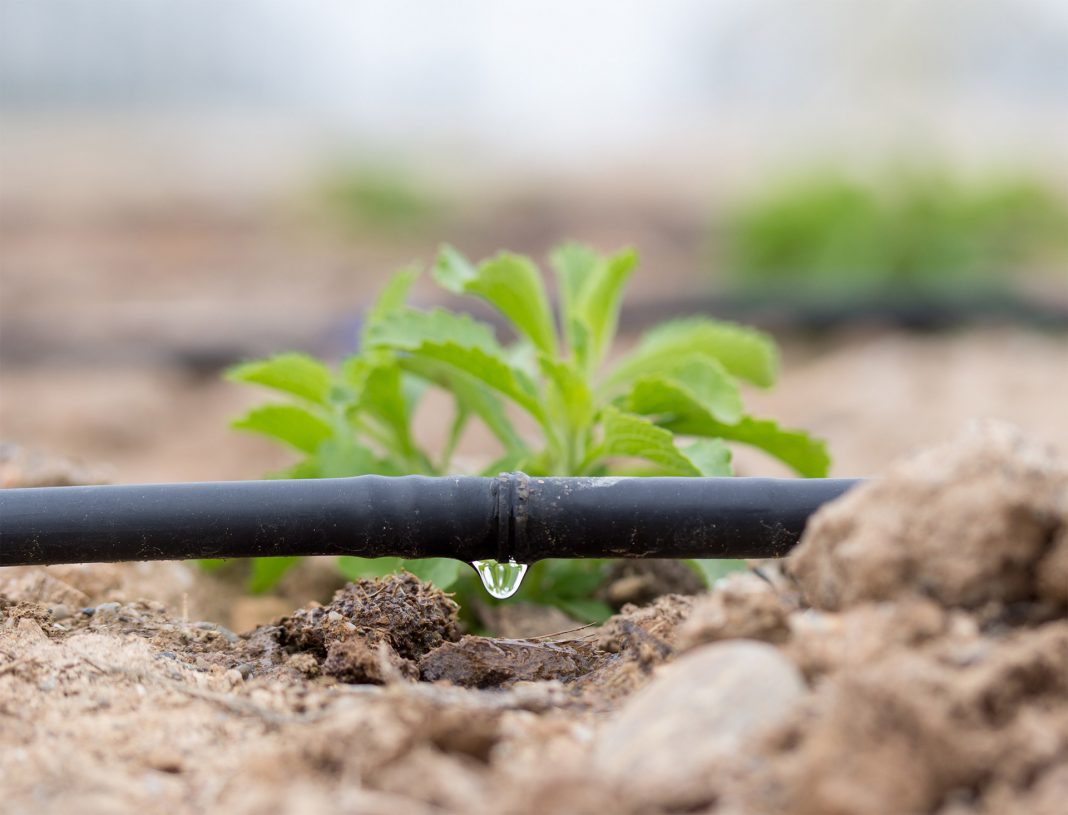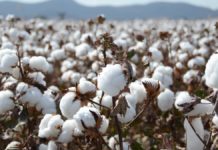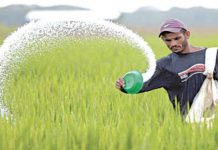Pakistan is faced with one of the most crucial issues of all time – food and water shortage, and now more than ever needs a solution to eradicate this menace. Some experts believe that this would be the biggest challenge for the recently elected government which is to take charge in just a few days from now. With over 200 million people depending on depleting water reserves it is high time that the government along with the people of Pakistan find sustainable solutions.
Agriculture constitutes the largest sector of Pakistan’s economy and the majority of the population, directly or indirectly, is dependent on this sector. It contributes about 24 per cent of Gross Domestic Product (GDP) and accounts for half of the employed labour force and is the largest source of foreign exchange earnings. It not only feeds both rural and the urban areas of Pakistan but also accounts for reasonable exports. Realising its importance, planners and policymakers are always keen to have reliable area and production statistics of agricultural crops well in time. Policymakers primarily need accurate and timely statistics for the important crops such as wheat, cotton, rice, sugarcane, maize etc.
However, in recent years, due to persistent hikes in the prices of essential commodities like pulses, onions, potatoes, chillies and tomatoes these crops have also gained in economic importance.
Surprisingly, agriculture accounts for over 90 per cent of all freshwater consumption in Pakistan and nearly 50 per cent is wasted due to poor irrigation practices. According to Pakistan Bureau of Statistics (PBS) in 2013-14 a total of 18.63 million hectares metres of land was irrigated through various sources including tube wells, canals and wells.
According to World Bank estimates conventional irrigation methods such as flood irrigation render significant water losses of 20 per cent to 25 per cent. Meanwhile, uneven fields and poor farm design further add to agricultural losses. Under Pakistan’s Water Accord 1991, Punjab receives 6.9 million-hectare metres, though less than half of that, only 3.2 million-hectare metres ever makes it to the farm gate due to losses in canals and watercourses.

Drip Irrigation – Less Water More Food
Drip irrigation is a relatively modern irrigation technique of micro-irrigation system that has the potential to save water and nutrients by allowing water to drip slowly to the roots of plants, either from above the soil surface or buried below the surface. The goal is to place water directly into the root zone and minimise evaporation. Drip irrigation systems distribute water through a network of valves, pipes, tubing and emitters. Depending on how well designed, installed, maintained, and operated it is, a drip irrigation system can be more efficient than other types of irrigation systems, such as surface irrigation or sprinkler irrigation.
Drip irrigation is used in farms, commercial greenhouses, and residential gardeners. Drip irrigation is adopted extensively in areas of acute water scarcity and especially for crops and trees such as coconuts, containerised landscape trees, grapes, bananas, ber, eggplant, citrus, strawberries, sugarcane, cotton, maize, and tomatoes.
Abdul Tariq, a local farmer who manages a 9.5-acre orchard told Profit, “Drip irrigation is revolutionary for agriculture. The efficient application and use of water for every plant is very important and it not only increases the yield but also affects the quality of produce,” he says.
“It used to take me 2 days to irrigate the fields before through flood irrigation, however, it takes me less than 2 hours to 3 hours to irrigate the whole field and my yield has not only increased at least 35 per cent to 100 per cent but the quality has also improved,” he said. Tariq further explained that “Drip irrigation allows better fruiting on every plant. Plant health does not get compromised, while the survival rate of saplings has now increased to 97 per cent from 60 per cent.”
Drip irrigation has increased water efficiency by 50 per cent, Tariq added, saying drip irrigation is the best solution to cope with Pakistan’s water crisis and food insecurity. Agriculture experts believe that the implementation of modern irrigation methods allows uniformity among crops in terms of colour, size and shape. Meanwhile, modern irrigation techniques reduce physical labour by at least 20 to 30 per cent, experts reiterate.
Corporate Social Responsibility
Nestlé Pakistan along with the World Bank and the Agriculture Department has expedited its efforts to promote drip irrigation system to tackle water scarcity in the province while ensuring a sustainable supply chain.
Profit visited a farm near Okara that has been set up as a pilot project with the help of Nestlé to understand drip irrigation. Naeem Hafeez, the farm owner, told Profit he was saving at least 50 per cent to 70 per cent water through drip and sprinkler irrigation system, as water was being provided in correct quantities direct to the roots, eliminating water wastage.
Hafeez, who has installed a drip system at his 38-acre farm, told Profit it costs Rs70,000 to Rs100,000 per acre per acre to install however the long-term savings and benefits outweigh the initial setup costs. Hafeez added, “I am saving almost 50 per cent in fertilizer cost. Fertilizers are directly mixed with the water and then distributed to the roots of the crops. Now, these savings coupled with water saving, increased production, reduced labour input and other operating costs, the initial cost to set up the system, in my opinion, is recovered within a single season.”
According to Hafeez, flood irrigation, not only consumed a higher quantity of fertilizer but also supported weeds which damaged the yield. In drip irrigation, he said, weeds could not receive water or fertilizer.
Moreover, under the pilot project, Nestlé has covered 40 per cent of the farmer’s cost of putting up equipment for drip irrigation while the Punjab Agriculture Department covers 60 per cent of the cost through the World Bank SMART Programme.

Nestlé Sustainable Agriculture Specialist Allah Bakhsh told Profit, Nestlé Pakistan’s team has developed smart soil moisture sensor that can read the moisture and water level in the soil and send regular data updates to a cloud from where farmers receive information regarding where and when the crops need to be irrigated.
These sensors have been developed by Nestlé’s Milk Collection and Dairy Development (MCDD) team in collaboration with Waziup in Italy, University of Pao in France and Lahore University of Management Sciences (LUMS) in Pakistan. It measures the water level of soil and regularly sends data to a cloud. The farmer receives uninterrupted information about how much and which area to irrigate; keeping the farm from under or over-irrigation. Nestle expects another 20 per cent reduction of water as a result of Water Sense Technology.
And this is not all, Hafeez is also working on the installation of solar pumps on his farm with the help of Punjab Government with 80 per cent contribution from the provincial government and 20 per cent by the farmer. In parts of Punjab where unannounced power outages last up to 8 hours disturbing the irrigation schedules, solar panels are now becoming a necessity. According to another Nestle farmer Mustapha, “Solar power, in Punjab is estimated to be operational for 330 days in a year. If we rely only on traditional grid network, the drip irrigation system would run for only 150 days in a year”.
Moreover, the project has also received support from the Punjab Agriculture Department and is actively being promoted throughout the region. Allah Bakhsh stated that the government was encouraging the adaptation of technology under the on-going Punjab Irrigated-Agriculture Productivity Improvement Project (PIPIP) to overcome water scarcity.
Under this project, he said, the Agriculture Department was installing drip and sprinkler irrigation on subsidy basis. With this technology, he said, the farmers could save 60 per cent electricity and diesel costs augmenting per acre yield by 100 per cent. Currently, the system was used for small-scale cultivation, however, other techniques and methods are underway to extend the programme to large-scale cultivation.
“With automated drip irrigation system powered by a solar pump, we are able to optimise water use for agriculture keeping in view dwindling groundwater resources in Punjab,” Allah Bakhsh explained.
Nestlé has installed drip irrigation on 68 acres in 2017, saving up to 140 million litres of water, with an aim to take this acreage up to 118 by the end of 2018. Moreover, Nestle aims to deploy this technology to at least 185 acres by 2020 and is constantly bringing farmers onboard to achieve this vision.
Food Exports
Agriculture experts believe that by implementing techniques and strategies such as drip irrigation, Pakistan can not only solve its water crisis but also boost food exports since Pakistan is an agriculture country. Innovative steps like drip irrigation not only improve productivity as mentioned earlier it also gives uniformity to the product. Moreover, it is cheaper. Farmers essentially do not control prices however they can control costs essentially increasing profits both locally and internationally.
Despite falling and weak exports, Pakistan has managed to increase food exports by 29.28 per cent during the outgoing fiscal year 2017-18 against the exports of the same period of last year. Food exports were recorded at $4797.936 million during July-June (2017-18) against exports of $3711.159 million during July-June (2016-17), showing growth of 29.28 per cent, according to the latest data of Pakistan Bureau of Statistics (PBS).

Among food products, rice exports have increased by 26.78 per cent from $1606.834 million last year to $2037.075 million. Among the rice varieties, exports of basmati rice increased by 19.14 per cent while the exports of other rice commodities increased by 29.78 per cent.
While fruit exports increased by 5.08 per cent going up from $184.016 million to $241.426 million. Likewise, vegetable exports have increased by 30.56 per cent, from $184.916 million to $241.426 million. Sugar exports, on the other hand, increased by 215 per cent, from $161.039 million to $508.333 million while wheat exports went up from $1.038 million to $236.339 million, showing growth of 22668 per cent.
Meanwhile, imports into the country during the period also increased by 15.10 per cent by going up from $52.910 billion in FY 2016-17 to $60.898 billion during FY 2017-18. Based on the figures, the external trade deficit during the outgoing fiscal year 2017-18 increased by 15.95 compared to last year and the trade deficit during FY 2017-18 was recorded at $ 37.670 billion against the deficit of $32.488 billion in FY 2016-17.
Drip irrigation, water sense technology and solar panels combined reduce costs exponentially, ultimately allowing a small step to make a major impact.
The bottom line is, improved agricultural productivity depends on efficient use of resources; principally land and water. However, the key to successful change rests with the large landowners owning 40 per cent of the arable land and controlling most of the irrigation system.



































that a good idea.water is really a big issue for us especially in Balochistan province.in our area the water level is about 250 ft.now can anybody suggest me the that how much expenses for 10 Acre land grow with water drip system
CEO Neslte Pakistan is kindly requested to financially help us to boost tourism in Kharmang district of Gilgit Baltistan for construction of tourist sites and for beautification of district please. Regards.
Abbas Ali Deputy Commissioner Kharmang. 03554111555 and 03461116194
Well there is no scheme for kpk region it’s sad that one region is fully being helped and we are suffering
Kindly help bring such schemes to kpk too
Comments are closed.